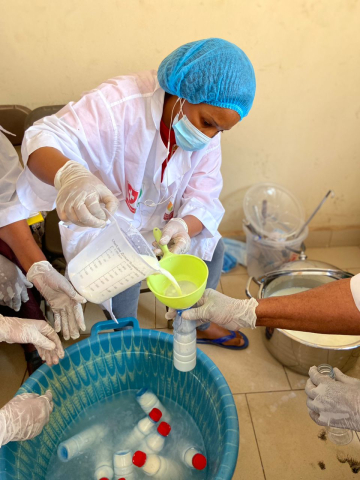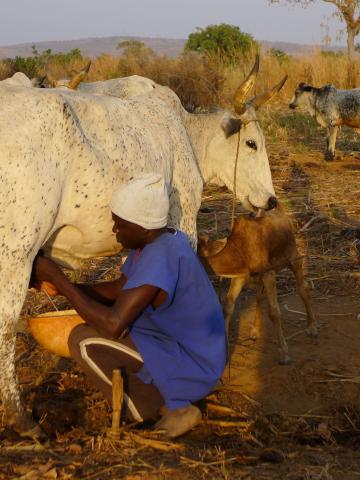The Republic of Guinea is a country with a strong pastoral tradition, boasting immense natural potential thanks to the diversity of its agroecology conditions. Livestock farming remains the second most important rural activity after agriculture. It involves 283,000 livestock farmers and their families, whose livestock numbers in 2016 were estimated at 6,759,000 cattle, 2,380,000 sheep, 2,851,000 goats, 130,000 pigs and 30,000,000 poultry.
It provides income for 30% of the rural population. The main livestock species are cattle, sheep, goats, pigs and poultry (local and improved). The herd is almost exclusively made up of local breeds: N'dama cattle (99.9% of all cattle), Djallonkés sheep and goats (99.7%), characterized by their hardiness, their ability to adapt to their environment and make the most of natural pastures, and above all their resistance to trypanosomiasis. The livestock sector in Guinea offers an opportunity to improve the production of quality animals and meat.
This can be achieved by improving current pastoral practices, namely:
- the low use of breeds with high production potential
- the persistence of low-productivity extensive systems
- the lack of initiatives to improve the feeding system of livestock
- the difficult access to and high cost of veterinary products, leading to the non-declaration of diseases by livestock farmers
- the frequency of epidemics
- the low level of structuring and professionalization of livestock farmers' organizations
This project is based on four main levers for action:
- strengthening the institutional, organizational and technical capacities of beneficiaries, which will enable the development of an organizational and institutional dynamic at the level of each player, with a view to promoting a mode of operation based on the basic principles defined collegially by the members and deemed legitimate. It is strategically based on training and support/advice on the themes of best practices, sanitary and processing standards, and internal governance of the organizations to ensure control of the local milk sector
- strengthening the operational capacities of project beneficiaries in both the production and marketing of local milk: This will consist of providing beneficiaries with adequate equipment to enable them to develop their professional activities. It mainly involves setting up mini-dairies and their equipment, and a marketing network
- developing interactions between the project's stakeholders: This involves interactions between groups of dairy farmers, collectors, transporters, processors, traders and fodder crop traders, and technical livestock services. It will highlight the need to interact and support interactions through collaboration agreements that these players will establish between themselves to improve the development of the local milk value chain. Mastery of this lever will enable local milk industry players to take greater ownership of the system as a whole
- capitalizing on the project's achievements: This concerns the entire system for monitoring and evaluating indicators and capitalizing on the project's successes. This lever will enable the direct effects of the project on the improvement of the dairy production system to be collected, and the impact of the action to be measured once it has been implemented
To contribute to increasing productivity and agro-sylvo-pastoral production through diversified and sustainable production systems
Specific objectives
Ensuring effective implementation of the action, the consortium will use a participatory methodology aimed at involving all stakeholders. The beneficiaries of the action will be at the heart of the overall implementation strategy
This methodology will be based on the following key aspects:
Outcome 1
- A benchmark diagnosis is carried out to update the current state of livestock farming systems and practices in the project areas
Outcome 2
- The availability of and access to high-quality, low-cost animal feed to increase the productivity and profitability of cattle and small ruminant farms are enhanced
Outcome 3
- The supply of animals with high meat production potential has increased
Outcome 4
- Niche markets are being developed to give consumers permanent access to butchered meat





